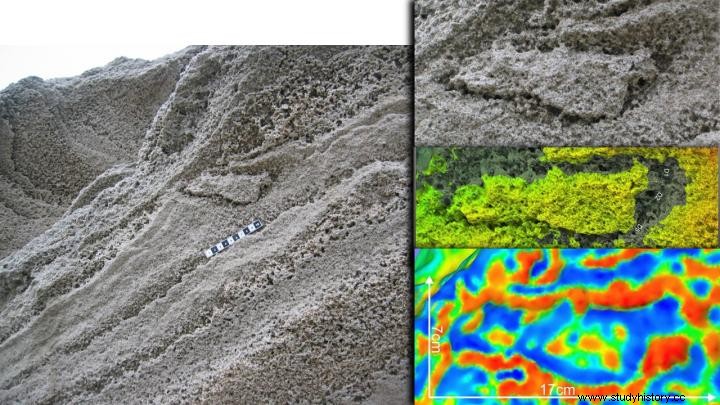The prestigious international journal Quaternary Science Reviews has just published an article in which scientists from the Gibraltar National Museum participated, together with colleagues from Spain, Portugal and Japan. The published results come from an area of the Catalan Bay sand dune.
This work began ten years ago, when the first dates were obtained using the OSL method. It is then that the first tracks left by vertebrates were found. In subsequent years, the natural collapse of the sand has revealed more material and has allowed a detailed study that includes new dates.
The layers of sand in the rampant dunes above Catalan Bay are a relic of the last ice age, when sea levels were up to 120 meters below current levels and a large dune field stretched east from the base of the Rock.

The identified footprints correspond to known species, from fossil material, that inhabited Gibraltar:red deer, ibex, aurochs, leopards and elephants. In addition, scientists have found the footprint of a young human (106-126 cm tall), possibly Neanderthal, dating back to around 29 thousand years ago. It would match the late Neanderthal dates from Gorham's Cave.
If confirmed to be Neanderthal, these dunes would become the second site in the world with footprints attributed to these humans, the other being Vartop Cave in Romania.
These finds add further international importance to Gibraltar's Pleistocene heritage, declared a World Heritage Site in 2016.
The research is part of the Gibraltar Caves Project, with the participation of scientists from the University of Seville.
Fonts
Following the last Neanderthals:Mammal tracks in Late Pleistocene coastal dunes of Gibraltar (S Iberian Peninsula) , Fernando Muñiz et al. dx.doi.org/10.1016/j.quascirev.2019.01.013
